A Comprehensive Guide to Pulse Width & Frequency Sweep in Electroacupuncture
Posted by John Hubacher on Apr 24th 2025

In the evolving field of electroacupuncture, understanding how to configure your device's settings can directly impact patient outcomes. Among the most critical parameters are pulse width and frequency sweep. These aren’t just technical settings they are therapeutic levers that influence which nerve fibers are stimulated, how muscles respond, and how quickly relief is achieved.
This guide breaks down the science behind these functions, explaining their purpose, application, and how modern Electroacupuncture Machines and Devices now offer dynamic, customizable features for more targeted treatments. Whether you're treating chronic pain, muscle tension, or neurological concerns, getting these parameters right can transform your clinical results.
What is Pulse Width in Electroacupuncture and Why Does it Matter for Patient Outcomes?
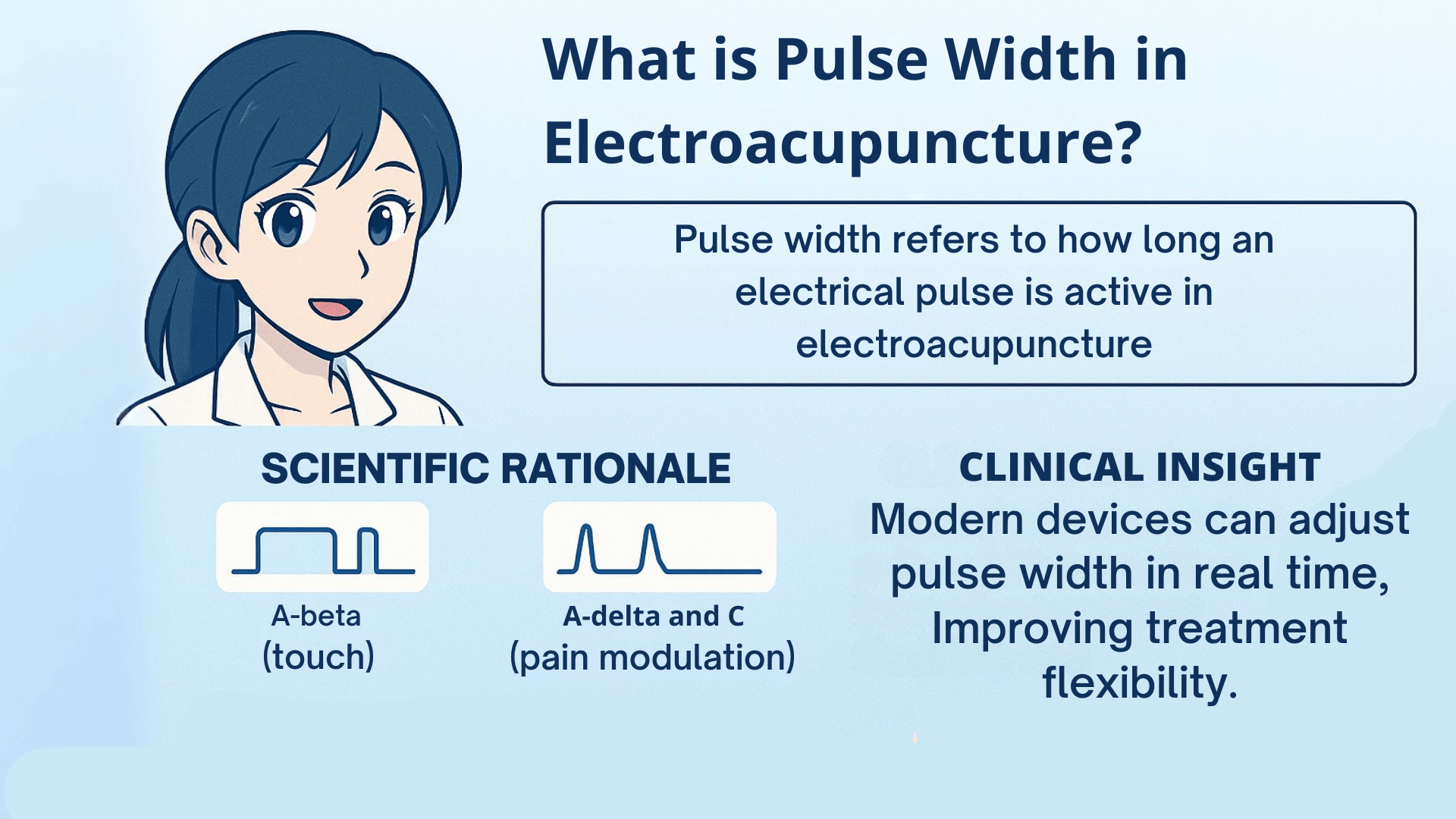
In electroacupuncture, pulse width refers to the duration of time that each electrical pulse remains active. This setting, measured in microseconds (µs), plays a pivotal role in determining which types of nerve fibers are activated during treatment a factor directly tied to therapeutic outcomes.
Scientific Rationale:
Different nerve fibers have different thresholds for activation:
- A-beta fibers (associated with touch and pressure) are activated with shorter pulse widths.
- A-delta and C fibers (linked to pain modulation and autonomic response) typically require longer pulse durations.
This is rooted in electrophysiological principles like chronaxie and rheobase, which describe a nerve’s responsiveness to stimulation. By fine-tuning pulse width, practitioners can target specific neural pathways making treatments more efficient and symptom-specific.
Clinical Insight:
Some modern electroacupuncture devices integrate features like Pulse Width Modulation and Pulse Width Sweep, enabling real-time adjustments of pulse duration. These innovations prevent nerve desensitization, improve therapeutic range, and offer greater control in treating conditions like chronic pain, muscular tension, or neuropathic disorders.
This dynamic approach contrasts with traditional static pulse widths, offering more individualized treatment protocols based on patient responsiveness and clinical objectives.
The Science Behind Frequency Sweep in Electroacupuncture Therapy
Frequency sweep refers to the controlled variation of electrical stimulation frequency during a session. Instead of applying a fixed frequency (e.g., 2 Hz), sweeping allows devices to automatically cycle between a range like 1 Hz to 20 Hz throughout the treatment.
Why Is This Important?
The human nervous system adapts quickly to repetitive stimuli. Static frequencies can lead to neural accommodation, reducing effectiveness over time. A frequency sweep avoids this by constantly changing the stimulus profile, which:
Maintains nerve excitability
Stimulates both low-frequency (endorphin-producing) and high-frequency (segmental inhibition) pathways
Enhances patient comfort during extended sessions
Technological Advantage:
Many advanced electroacupuncture machines now include a built-in Sweep Function. This feature automatically modulates the frequency throughout treatment, ensuring comprehensive stimulation without the need for manual changes.
It’s especially effective for:
- Chronic pain syndromes
- Post-operative rehabilitation
- Patients with varied sensitivity thresholds
When combined with precise waveform delivery and calibrated output, sweep technology enhances both immediate relief and long-term outcomes in clinical practice.
Static Frequency vs. Frequency Sweep: Key Differences for Practitioners
When configuring an electroacupuncture session, choosing between static and sweeping frequencies can significantly influence therapeutic outcomes. Each approach has its strengths, and understanding their differences helps practitioners tailor treatments based on patient needs.
Static Frequency vs. Frequency Sweep - At a Glance
| Factor | Static Frequency | Frequency Sweep |
| Definition | Fixed frequency (e.g., 10 Hz) maintained throughout the session | Cycles continuously within a range (e.g., 2–20 Hz) |
| Stimulation Target | Targets a specific nerve response or fiber type | Stimulates a wider range of nerve fibers dynamically |
| Therapeutic Use | Best for precise, localized stimulation needs | Ideal for broad pain relief and neural re-education |
| Risk of Adaptation | Higher risk—nerves may desensitize with constant input | Lower risk—frequency variation reduces habituation |
| Patient Comfort | Can become intense or uncomfortable over time | Smoother experience due to changing stimulation |
| Device Complexity | Common in basic or entry-level electroacupuncture devices | Available in advanced, programmable devices |
Practical Summary:
- Choose static frequency when you need precision such as targeting motor points, trigger points, or performing condition-specific electrodiagnostics.
- Opt for frequency sweep when treating broad pain areas, post-op rehab, or patients with hypersensitivity where nervous system adaptation must be avoided.
Both methods serve distinct clinical purposes. The key is to align your choice with the desired physiological response, patient tolerance and overall treatment objectives.
How Pulse Width & Frequency Sweep Improve Electroacupuncture Results?
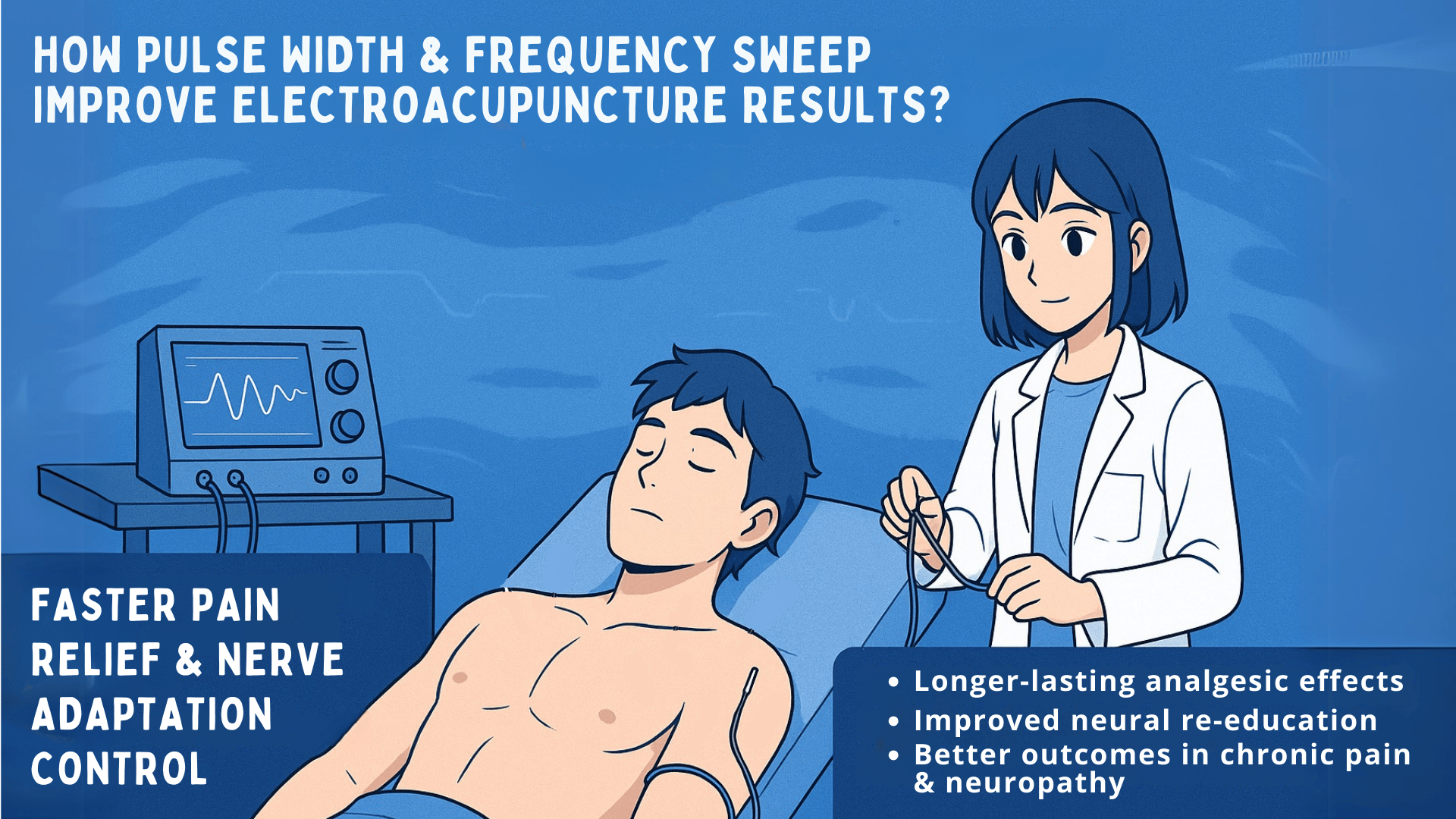
When applied with precision, pulse width and frequency sweep settings can significantly enhance the effectiveness of electroacupuncture treatments. These features aren’t just technical add-ons - they are clinical tools that directly affect patient response, comfort and treatment efficiency.Faster Pain Relief & Nerve Adaptation ControlDynamic pulse width variation, especially through Pulse Width Sweep, prevents the nervous system from desensitizing during treatment. This results in:
- Longer-lasting analgesic effects
- Improved neural re-education for post-injury or post-surgical cases
- Better outcomes in conditions like chronic musculoskeletal pain, neuropathy and fibromyalgia
Recent research on Pulse Width Modulation Electro-Acupuncture (PWM-EA) has demonstrated therapeutic benefits in reducing cardiovascular remodeling and regulating nitric oxide activity in hypertensive models - reinforcing the biological impact of modulating stimulation parameters like pulse width and frequency in clinical protocols.
Personalized Patient Protocols
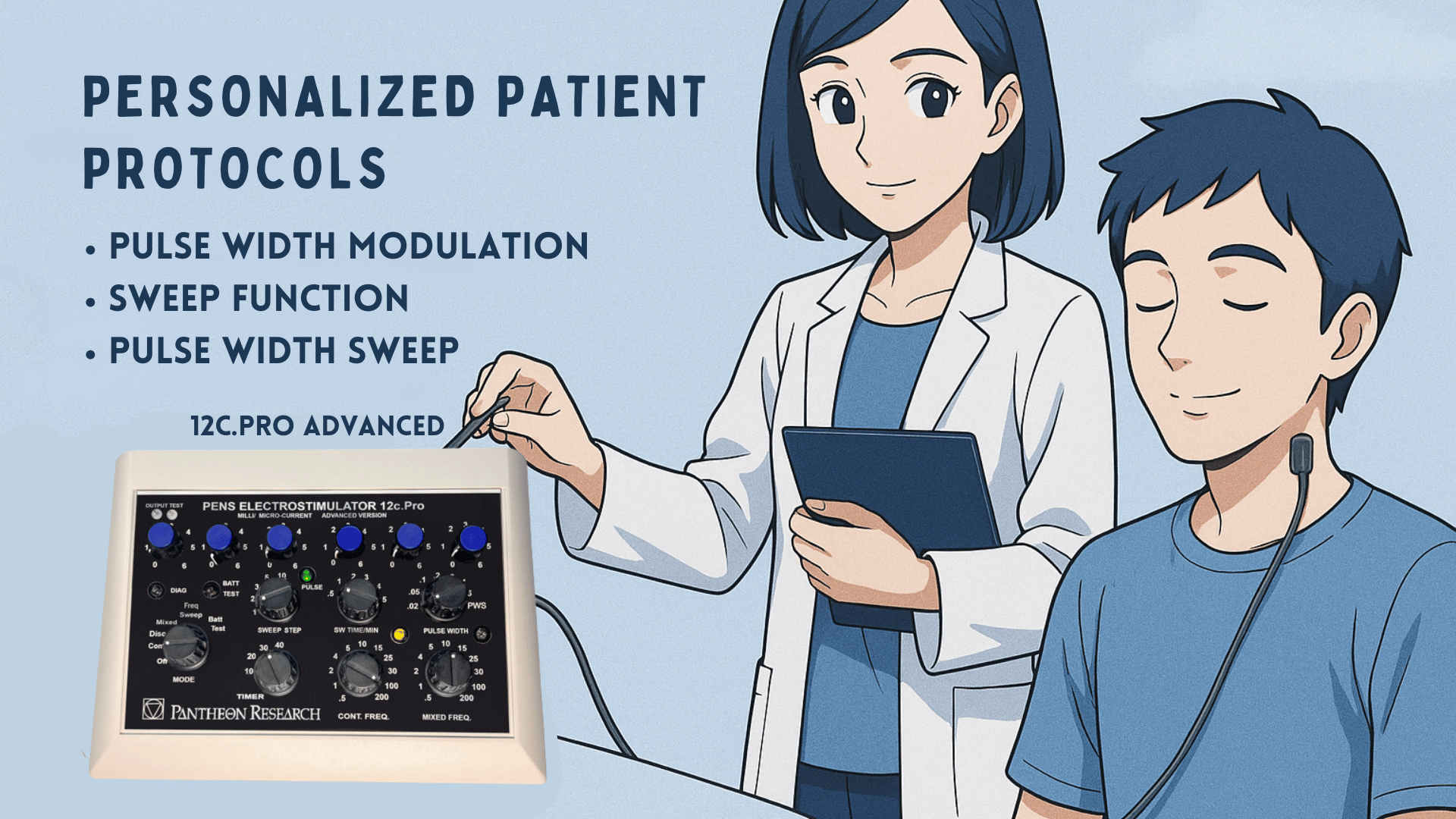
In modern clinical practice, one-size-fits-all treatments are outdated. That’s why advanced devices like the 12c.Pro Advanced include features such as:
- Pulse Width Modulation for fine-tuning nerve activation
- Sweep Function to automatically cycle frequencies across a broad range
- The patented Pulse Width Sweep system, which dynamically adjusts pulse duration throughout the session
This level of customization allows practitioners to customize sessions to each patient’s condition, nerve sensitivity and therapeutic goals - a critical factor in patient retention and treatment outcomes.
Machine Versatility for All Levels of Care
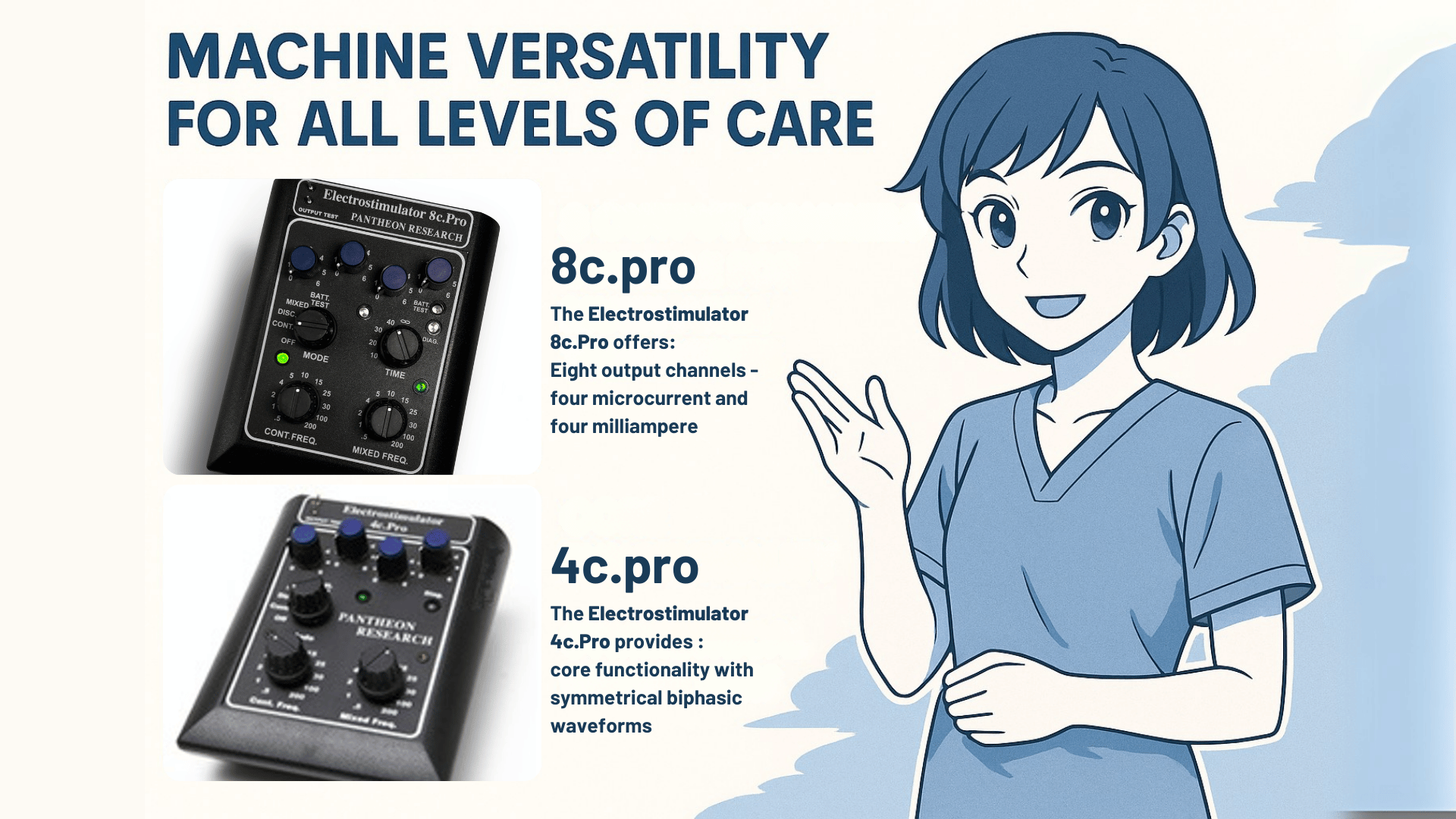
For high-volume or specialized practices, investing in purpose-built Electroacupuncture Machines and Devices can streamline workflows and improve clinical consistency.
- The Electrostimulator 8c.Pro offers eight output channels - four microcurrent, four milliampere - making it ideal for comprehensive multi-area treatments.
- The Electrostimulator 4c.Pro provides core functionality with symmetrical biphasic waveforms and ultra-precise frequency calibration (<0.06% error), suitable for focused therapy protocols.
Each machine is manufactured to rigorous scientific standards, including diagnostic safety checks, timer functions and ergonomic designs to ensure ease of use and patient safety.
Choosing the Right Electroacupuncture Settings for Better Results
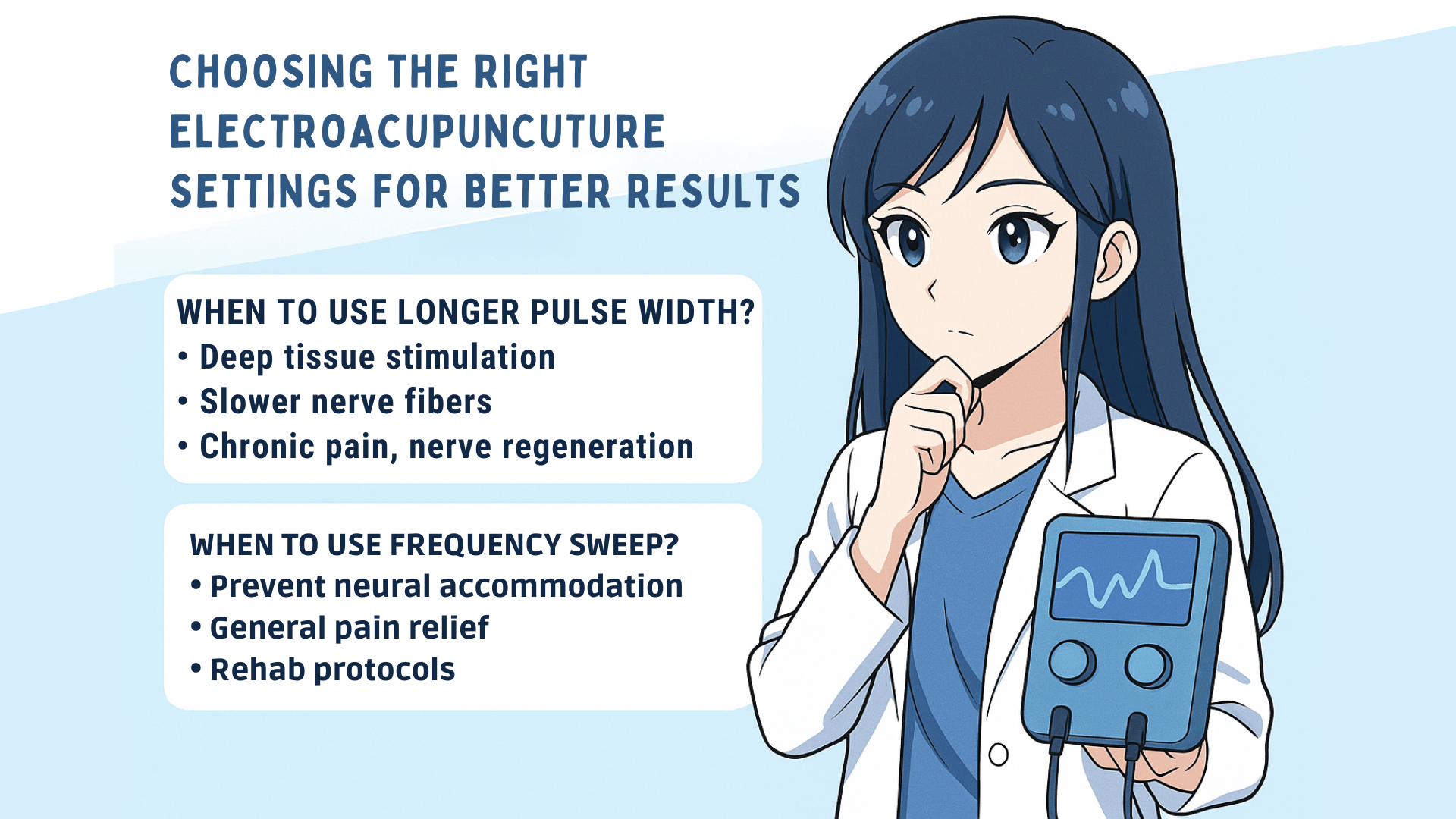
Fine-tuning your electroacupuncture protocols starts with understanding how to match stimulation parameters to patient-specific needs. While technology plays a role, the real results come from aligning pulse width and frequency sweep settings with the clinical intent whether it’s pain relief, neuromuscular stimulation, or systemic balancing.
When to Use Longer Pulse Widths
- Ideal for deep tissue stimulation
- Engages slower-responding nerve fibers (e.g., C-fibers)
- Used in chronic pain, nerve regeneration and visceral conditions
When to Use Frequency Sweep
- Prevents neural accommodation in longer sessions
- Recommended for general pain relief, fibromyalgia, or rehab protocols
- Increases patient tolerance by dynamically modulating sensation
Practitioners working with sensitive populations or post-operative cases often benefit from tools like the Clinical Microcurrent Stimulator, which provide both low-intensity microcurrent and programmable parameters for high precision. These devices can be especially valuable in facial rejuvenation, sports therapy, or autonomic regulation.
Expand Your Skillset with Training
Whether you’re new to electroacupuncture or looking to advance your expertise, structured learning can refine your protocols. Programs like Electroacupuncture Training and Micorcurrent Therapy Training dive deep into evidence-based applications, modern neurophysiology and real-world case studies to help you integrate cutting-edge techniques with confidence.
“As the field evolves, staying updated through both technical upgrades and clinical education ensures your treatments remain effective, personalized and grounded in science.
Final Insights on Using Pulse Width and Frequency Sweep for Better Precision
In the world of electroacupuncture, small adjustments can lead to big differences. The ability to fine-tune pulse width and integrate frequency sweep technology gives practitioners a critical edge - not just in comfort, but in achieving lasting therapeutic results.
Whether you're applying microcurrent for delicate facial work or milliampere strength for muscular conditions, mastering these parameters ensures more personalized, effective treatments.
At Pantheon Research, we design our devices including the 12c.Pro Advanced, Electrostimulator 4c.Pro, and 8c.Pro with this clinical precision in mind. Each unit is built to the highest scientific and ergonomic standards, empowering professionals to work with confidence and clarity.
Today’s electroacupuncture isn’t about one-size-fits-all therapy. It’s about smart, adaptive treatment that honors both the science and the individual.
If you're looking to elevate your practice, it starts with choosing tools designed by a brand that shares your commitment to results.
Frequently Asked Questions
1. What does adjusting pulse width do in electroacupuncture?
Adjusting pulse width changes the duration of each electrical impulse, which in turn determines which types of nerve fibers are activated. Shorter widths target sensory nerves for pain relief, while longer widths engage deeper fibers for muscular or autonomic therapy.
2. Is frequency sweep better than fixed frequency in electroacupuncture?
Frequency sweep can be more effective in many cases, especially for patients with chronic conditions or hypersensitivity. It prevents nerve desensitization by continuously varying the stimulation, resulting in broader therapeutic coverage and improved comfort.
3. Can I use frequency sweep and pulse width modulation together?
Yes. When used together, frequency sweep and pulse width modulation offer layered stimulation — targeting different nerve groups and tissue depths simultaneously. This combination enhances efficacy and can shorten overall recovery time.
4. Which electroacupuncture machine offers both pulse width and frequency sweep?
Advanced electroacupuncture devices by Pantheon Research, such as the 12c.Pro Advanced, are equipped with both Pulse Width Sweep and Sweep Function features. These tools enable dynamic, patient-specific stimulation protocols.
5. Do I need special training to use advanced electroacupuncture settings?
Yes. Understanding how to properly use pulse width and frequency sweep requires a solid grasp of neurophysiology and modern electrotherapy principles. Many clinicians benefit from advanced training programs focused on evidence-based protocols and hands-on device configuration.
